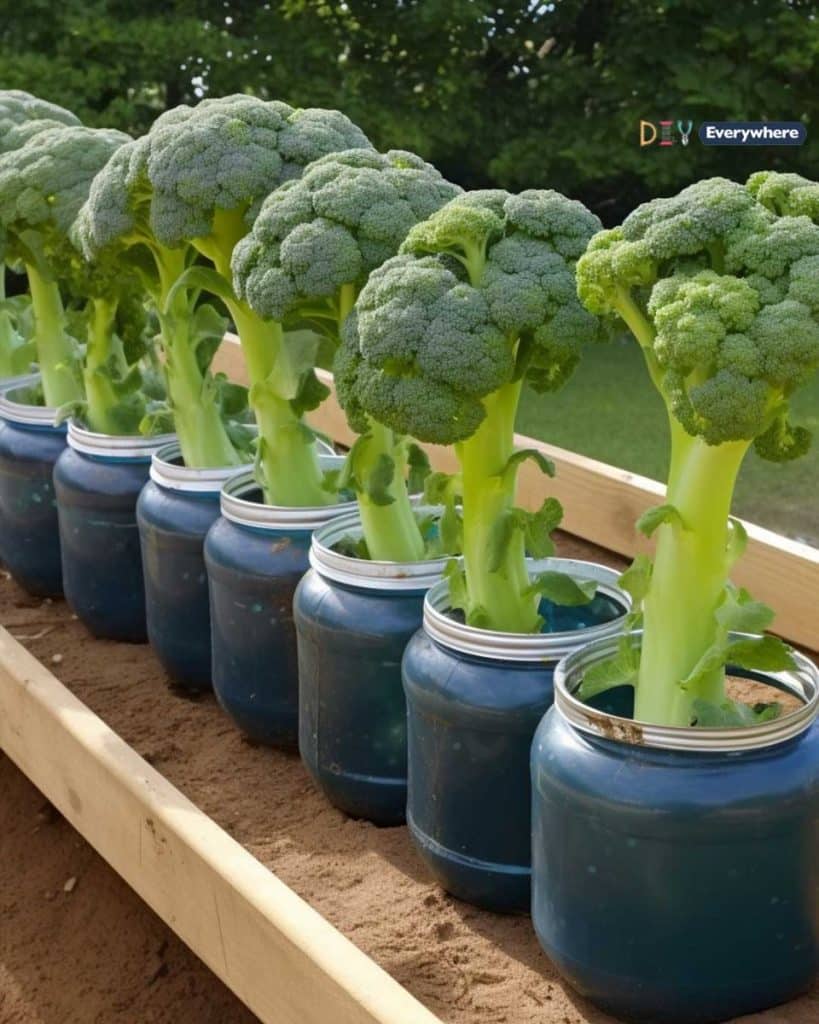
Cultivating fresh produce at home offers a rewarding opportunity to embrace healthier eating habits and connect with nature. Broccoli, with its nutrient-rich florets and versatility in the kitchen, is an excellent addition to any home garden.
In this guide, we’ll explore how to grow broccoli in a container, providing you with a step-by-step approach to enjoy homegrown goodness right on your doorstep.
Step 1: Choose the Right Container
Selecting the appropriate container is crucial when growing broccoli. Broccoli has deep roots, so it’s essential to choose a container that is at least 12 inches deep and 12 inches in diameter. You can use various containers, such as plastic pots, wooden boxes, or even fabric grow bags. Ensure that the container has drainage holes to prevent waterlogged soil, which can lead to root rot.
Step 2: Gather Your Supplies
Before you start planting, gather all the necessary supplies:
Container (12 inches deep and 12 inches in diameter)
High-quality potting mix
Broccoli seeds or transplants
Fertilizer (either slow-release granular or liquid)
Watering can or hose with a gentle spray nozzle
Mulch (straw or compost)

Step 3: Prepare the Potting Mix
Broccoli thrives in well-draining soil. Fill your container with a high-quality potting mix, which provides the necessary nutrients and ensures good drainage. You can also mix in some well-rotted compost to enrich the soil further. Leave about an inch of space at the top to prevent water runoff.
Step 4: Planting Broccoli Seeds or Transplants
You have two options when it comes to planting broccoli: seeds or transplants.
From Seeds: Sow broccoli seeds about 1/4 inch deep in rows or a grid pattern. Keep the soil consistently moist until seedlings emerge, which usually takes about 5-10 days.
From Transplants: You can also purchase broccoli seedlings from a nursery or start your own indoors. Transplant them into your container, making sure to space them about 18 inches apart to give them room to grow.
Step 5: Watering
Broccoli plants require consistent moisture, so water them regularly. Ensure that the soil stays evenly moist but not waterlogged. Using a watering can or a gentle spray nozzle on a hose can help prevent disturbing the delicate seedlings. Water in the morning to allow the leaves to dry during the day, reducing the risk of fungal diseases.
Step 6: Fertilizing
Fertilize your broccoli plants every 3-4 weeks with a balanced, all-purpose fertilizer. You can use either slow-release granular fertilizer or a liquid fertilizer. Follow the instructions on the product label for the correct dosage, as over-fertilizing can harm the plants.
Step 7: Mulching
Applying mulch around your broccoli plants serves multiple purposes. It helps retain soil moisture, suppresses weeds, and regulates soil temperature. Straw or compost make excellent mulch choices. Apply a layer of mulch about 2 inches thick around the base of the plants, being careful not to cover the stems directly.
Step 8: Sunlight and Temperature
Broccoli loves full sun, so ensure that your container receives at least 6-8 hours of sunlight each day. Broccoli prefers cooler temperatures, ideally between 45°F to 75°F (7°C to 24°C). If you live in a region with hot summers, providing shade during the hottest parts of the day can help prevent the plants from bolting (going to seed prematurely).
Step 9: Pest and Disease Management
Keep an eye out for common broccoli pests like aphids, cabbage worms, and slugs. You can use natural remedies like neem oil or introduce beneficial insects like ladybugs to help control these pests. Inspect your plants regularly for any signs of disease, such as powdery mildew or fungal infections, and address them promptly.
Step 10: Harvesting
The time to harvest broccoli depends on the variety you’re growing, but typically, you can start harvesting when the main head reaches a size of 4-6 inches in diameter. Use a sharp knife or scissors to cut the head off just above the florets. Be sure to leave the plant in the container, as it may produce smaller side shoots that you can harvest later.
Growing broccoli at home in a container offers women aged 35-55 in the USA a convenient and rewarding way to enjoy fresh, homegrown produce year-round. By following this step-by-step guide, you can cultivate healthy and delicious broccoli right on your doorstep, enriching your meals and enhancing your connection to nature.
With proper container selection, quality potting mix, adequate sunlight, moisture management, fertilization, and pest control, you can successfully grow broccoli in containers and enjoy the satisfaction of harvesting your own nutritious and flavorful florets. Embrace the joys of container gardening and let broccoli thrive in your home garden.
Here’s to the abundance of homegrown broccoli and the nourishment it brings to our tables and our lives!
Happy gardening and happy harvesting!

